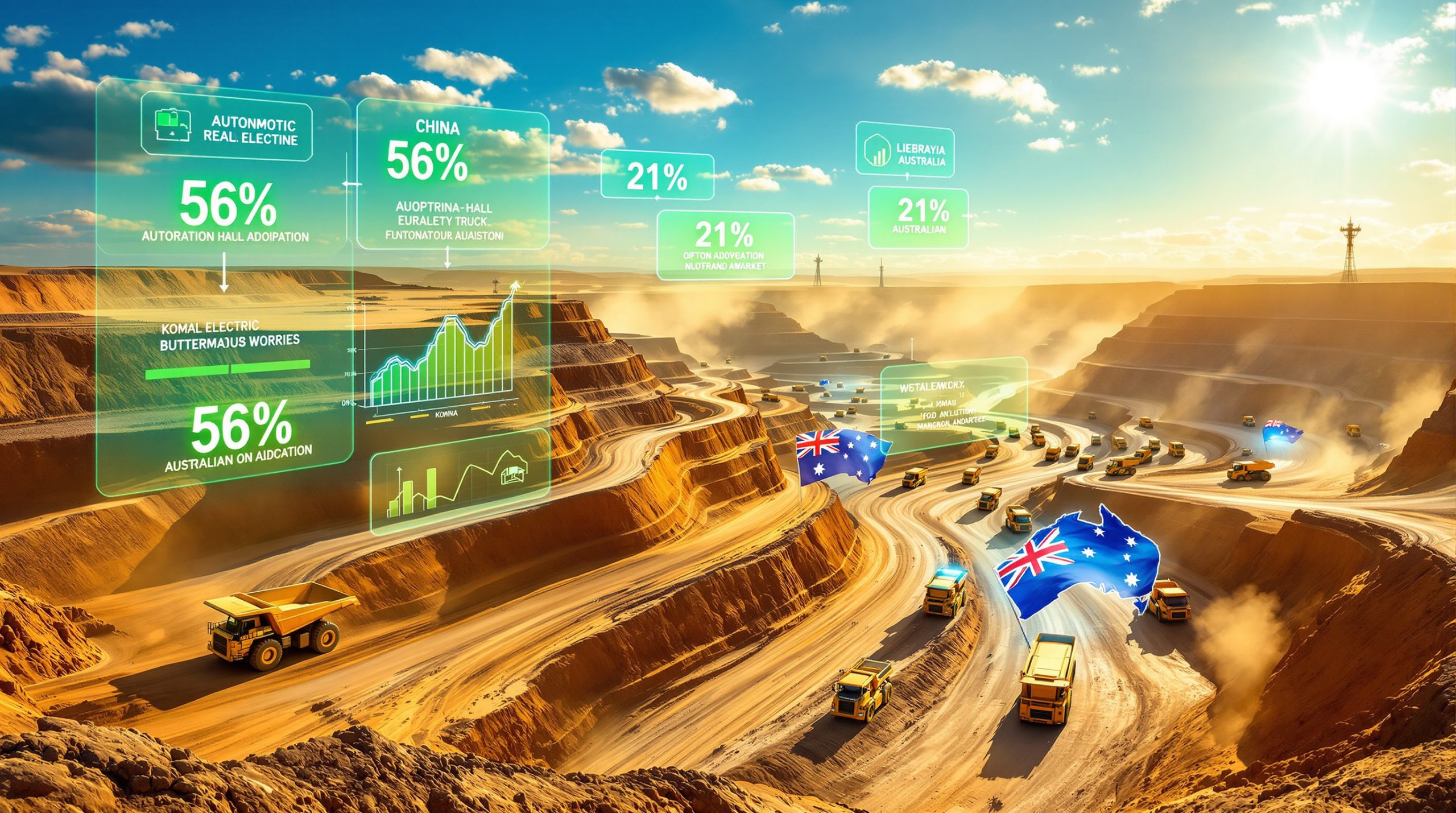Macro View: The Emerging Paradigm of Automation in Mining
Across industrial sectors, automation is redefining operational benchmarks, but nowhere is the effect as transformative as in large-scale resource extraction. The mining industry, traditionally associated with high-risk labor and capital-intensive infrastructure, is increasingly turning to autonomous solutions that promise not just productivity lifts but fundamental changes to safety, business models, and sustainability. The autonomous mining equipment adoption represents a pivotal shift that may soon redraw the global mining map, as companies embrace data-driven operations to maintain competitive advantage.
What Defines Autonomous Mining Equipment and Its Levels of Operation?
The term "autonomous mining equipment" spans several categories of operational intelligence and human oversight. To understand the emerging landscape, it's essential to delineate three primary modes:
Fully Autonomous: Equipment is capable of executing its tasks—hauling, drilling, or loading—without direct, real-time operator intervention. Onboard and remote AI algorithms handle decision-making, using a suite of sensors for navigation and obstacle avoidance.
Autonomous-Ready: These machines contain the hardware and control platforms for autonomy but may currently operate in manual or semi-autonomous modes due to site-specific or regulatory constraints.
Tele-Remote Operated: Multiple key mining assets are now piloted from remote stations. Here, operators control machinery using video feeds and sensor data, enabling personnel to stay away from hazardous zones.
Equipment Categories
- Haul Trucks: Dominating the automation field because of their critical role in material movement
- Load-Haul-Dump Machines (LHDs): More prevalent in underground mines, adapted for cramped spaces and cyclic operations
- Surface Drills: Equipped for repetitive tasks and often among the first to be automated due to their straightforward operational patterns
Technical Foundation
The sensor mining advancements typically include sophisticated architecture with GNSS and high-precision GPS for positioning. Furthermore, LiDAR systems enable 3D environment mapping, while proximity sensors and cameras detect personnel and obstacles. Advanced AI-enabled control units provide real-time navigation and diagnostics.
Surface vs. Underground
Surface autonomous vehicles mainly benefit from easier GNSS access and standard road layouts. However, underground systems rely on beacons, inertial navigation, and adaptive mesh networking for connectivity and control.
How Pervasive Is Automation in Global Mining Fleets?
As of 2025, autonomous mining equipment adoption is still nascent but rapidly accelerating. According to recent industry analyses:
- Approximately 4.2%–5% of core mining equipment (haul trucks, LHDs, surface drills) globally are either autonomous, autonomous-ready, or tele-remote
- By 2020, fewer than 1% of these machines were automated
- This rapid acceleration (especially since 2020) implies a compound annual growth rate of over 15% in autonomous equipment share recently
Global Fleet Adoption Table: 2008–2025
| Year | % of Autonomous/Ready/Tele-Remote Equipment |
|---|---|
| 2008 | <0.1% |
| 2012 | 0.2% |
| 2016 | 0.5% |
| 2020 | <1% |
| 2025 | 4.2%-5% |
Noteworthy Patterns
Around 300 mines globally operate fleets with autonomous features. Consequently, larger sites, especially in commodity-rich regions with large, homogeneous orebodies, skew the statistics. Just 10 mines host 30% of the world's autonomous equipment.
Equipment Category Penetration (2025)
| Equipment Type | Automation Share (of category) |
|---|---|
| Haul Trucks | Highest (~10%+ in Australia) |
| LHDs | Growing in underground mines |
| Surface Drills | Advanced, but <5% globally |
What Technical and Operational Factors Accelerate or Limit Automation Uptake?
Implementing autonomous mining equipment is not a turnkey process; a blend of financial, technical, and organizational hurdles affects deployment. The integration with modern mine planning systems has become increasingly critical for success.
Accelerators
- Productivity gains (10–30% typical uplift in output or efficiency)
- Extended operating hours (24/7 operation with shift transitions minimized)
- Lower fuel consumption and optimized maintenance intervals
- Improved workforce safety, reducing exposure to hazardous areas and fatigue
Inhibitors
High capital outlay: Autonomous systems can require a 20–40% higher initial investment versus conventional machinery—putting smaller operations at a disadvantage.
Legacy fleet integration: Upgrading existing assets or mixing new autonomous-ready models with older units poses software and workflow compatibility challenges.
Site connectivity: Remote mines still struggle to achieve the reliable, low-latency communications that autonomy demands. Mesh networks or satellite solutions only partly bridge this gap.
Multi-vendor complexity: Most large sites run mixed fleets (Caterpillar, Komatsu, Liebherr, etc.), and lack of interoperability standards complicates data integration and centralized management.
Regulatory and safety: Variability across jurisdictions complicates deployment, with some requiring detailed risk assessments and others offering limited standards for autonomous operations.
Where Are the Adoption Hotspots? Global and Regional Trends
Automation adoption in mining is highly concentrated, with certain countries and regions far ahead due to fleet scale, commodity types, and digital readiness. These patterns align with broader industry evolution trends shaping the global landscape.
| Country | % of Global Autonomous Equipment | Notable Sites & Features |
|---|---|---|
| China | 56% | Baishihu Coal (420 trucks), Yimin Coal (planned 300+) |
| Australia | 21% | Pilbara iron ore region (Fortescue, Rio Tinto, BHP) |
| Canada | 7% | Select gold/base metal ops |
| Chile | 5% | Copper-centric sites |
| Brazil | 1.4% | Iron ore operations |
Comparative Trends
In China, sweeping investment in centralised SOE operations (such as Guanghui Energy) allow entire fleet upgrades at single sites. Australia stands out for the fraction of haul trucks that are autonomous or ready—over 10%, reflecting years of Pilbara-based large-scale rollouts.
Canada, Chile, and Brazil are notable for targeted deployments in high-value base metals and precious metals mining. For instance, advanced automated mining solutions are driving operational excellence across these regions.
Which Companies and Mines Lead in Autonomous Adoption?
A handful of companies and mega-sites set the global pace for autonomous mining equipment adoption:
Baishihu Coal Mine (China): Currently the world's largest deployment, operating 420 autonomous haul trucks. Expansion by China's Guanghui Energy leverages centralised project design for standardisation and digital network integration.
Yimin Coal Mine (China): Adding a further 200 autonomous trucks over the next three years, projecting more than 300 autonomous units in operation by 2028.
Fortescue (Australia): With Liebherr, rolling out 360 battery-electric autonomous trucks between 2025 and 2030 across its Pilbara iron ore portfolio.
Earlier rollouts: Rio Tinto and Fortescue each reported over 160 autonomous haul trucks by 2020. BHP built the country's largest autonomous-ready haul truck fleet by 2022.
Concentration of Power
Just ten mine sites concentrate 30% of the global autonomous mining fleet. Of these, seven are in China and three in Australia.
How Are Technological Partnerships Fuelling Market Expansion?
Strategic collaborations anchor both technological evolution and commercial adoption. The most influential Original Equipment Manufacturers (OEMs) have developed alliances that combine hardware, control platforms, and electrification.
Caterpillar, Komatsu, Liebherr: All field turn-key solutions, with major investments in AI in mining applications. These investments focus on AI-driven fleet management, analytics, and autonomous control systems.
Battery-electric platforms: Fortescue's 360-truck purchase from Liebherr signals an industry shift toward emissions reduction alongside autonomy.
Integration Trends
All major platforms are pushing toward real-time fleet analytics, predictive maintenance, and cloud-based operations. Furthermore, partnerships with digital and automation start-ups are proliferating to accelerate software interoperability and cyber-physical security.
Additionally, comprehensive studies on autonomous mining systems demonstrate the strategic importance of these technological partnerships in driving market expansion.
What Quantified Operational Outcomes Drive Business Case Adoption?
Deployment of autonomous mining equipment is typically justified by measurable, multi-dimensional gains:
Productivity Gains: Operators consistently report output lifts in the 10–30% range, arising from perfectly-timed dispatch, consistent operation, and minimised idle times.
Operational Hours: Mines extend working hours beyond typical manual shift patterns, minimising lost time to shift handovers or worker fatigue.
Fuel and Maintenance Savings: Algorithms optimise routes, speed, and loading, while predictive maintenance foresees component failures before costly breakdowns.
Workforce Safety: Lowered exposure to accident risks, dust, and extreme temperatures leads to drops in recordable injury rates.
Key Performance Indicator (KPI) Table: Before and After Automation
| Metric | Pre-Autonomy | Post-Autonomy |
|---|---|---|
| Haul truck utilisation | 78–82% | 92–97% |
| Fuel per tonne moved | 100% (baseline) | 87–93% |
| Major maintenance events | 12/year | 5–8/year |
| Lost time injuries (annual) | 3–5 | 0–2 |
Figures representative—actual results vary by site and model deployed.
What Hurdles Remain for Widespread Implementation?
Despite positive data, significant hurdles remain for autonomous mining equipment adoption:
Capital payoff periods may be lengthy, particularly during resource price downturns. Interoperability across mixed-vendor or legacy fleets is still a key challenge for many operators.
Connectivity in ultra-remote locations (e.g., Canada, Chile) limits real-time control and delays full-fleet conversions. Workforce transition necessitates reskilling truck drivers and LHD operators to new oversight and analytics roles.
This potentially involves notable training costs and union negotiation implications. Sustainability of supply chains presents another challenge, as autonomous fleets, particularly battery-electric units, may introduce new requirements for parts inventory, diagnostics, and software patch cycles.
What Does the Next Decade Hold? Future Scenarios and Growth Pathways
Forecasting into 2035, several trends are likely to shape autonomous mining equipment adoption:
Global penetration could rise to 10–15% by early 2030s, assuming sustained capital flows and continued regulatory progress.
Major pipeline expansions: Fortescue and Yimin alone may approach 700+ new autonomous haul trucks by 2030, setting new global benchmarks for fleet digitalisation.
Full-fleet conversions: Top operators may opt for complete autonomous rollouts at flagship sites, leveraging new builds to bypass legacy integration. Others may pursue incremental upgrades.
Scenario Analysis
Acceleration: If network penetration and standardised protocols improve, and if ESG imperatives push for electrified, autonomous fleets, growth could reach the upper end of projections.
Pause: Weak commodity prices, or regulatory/talent bottlenecks, could slow expansion despite technical readiness.
ESG and Decarbonisation
The convergence of autonomy with electrification provides a dual advantage—improved productivity and immediate reductions in carbon footprint. This alignment supports mining companies' sustainability commitments whilst enhancing operational efficiency.
FAQ: Addressing Core Questions on Autonomous Mining Equipment Adoption
Q: What types of mines transition to autonomy most quickly?
A: Large, open-pit mines with uniform layouts, high assets concentration, and robust digital communications infrastructure typically adopt autonomous technologies ahead of underground or small-scale operations.
Q: How does automation impact energy use and emissions?
A: Autonomous and especially battery-electric mining equipment reduce fuel consumption and emissions per tonne due to optimised truck cycles, consistent speeds, and smart dispatch.
Q: What are the biggest risks in transitioning to autonomous fleets?
A: Key risks include high upfront capital costs, workforce transition complexities, technology integration issues, and uncertainty stemming from shifting regulatory requirements.
Key Takeaways and Strategic Recommendations
Autonomous mining equipment adoption is surging, led globally by China and Australia's large-scale coal and iron ore mines. The business case is underpinned by 10–30% improvements in productivity and marked gains in safety and asset availability.
Major partnerships with leading OEMs, and technology shifts toward battery electric and advanced analytics, are shaping the next phase of market expansion. Consequently, project owners should prioritise robust site connectivity, plan for operational data standardisation, and prepare rigorous workforce transition programmes.
These strategic moves will help mining companies extract maximum value from autonomous mining investments whilst positioning themselves for the future of mining operations.
"The transformation of mining through autonomous technology represents one of the most significant operational shifts in the industry's history, combining productivity gains with unprecedented safety improvements."
Strategic moves: Project owners should prioritise robust site connectivity, plan for operational data standardisation, and prepare rigorous workforce transition programmes to extract maximum value from autonomous mining investments.
Ready To Capitalise On Next-Gen Mining Automation?
Discover how mineral discoveries and automation advancements can transform your investment strategy with Discovery Alert. Utilise the Discovery IQ model to stay ahead of the market by receiving real-time alerts on significant ASX mineral discoveries. Visit the Discovery Alert homepage or explore remarkable historic outcomes on our discoveries page.




